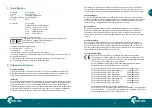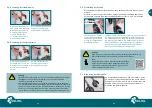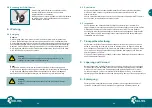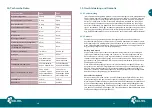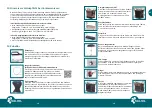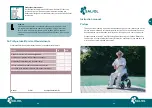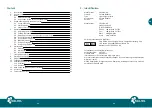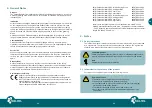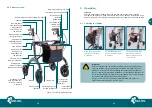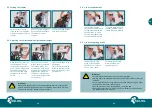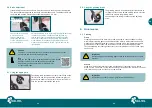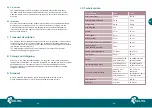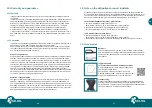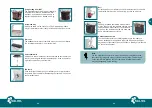
32
33
EN
5.6 Brake adjustment
If the braking force decreases due to wear of the wheels, the brake must be adjusted.
The brake should be adjusted so that both wheels brake evenly. The distance between
the brake pad and the wheel surface should be approx 2-3.5 mm.
Loosen the lock nut with
a size 8 open-end
spanner and turn it
completely upwards.
Fix the adjustment screw
at the same time.
Adjust the braking force by turning the adjustment screw
inwards or outwards. Check the brake function by
turning the wheels and operating the brake handles.
The wheels should turn freely but stop immediately
when braking. It should not be possible to move the
wheels when the brake is locked. Tighten the lock nut
tightly again.
Lock nut
Adjustment screw
Caution
The brake is correctly adjusted if, when the brake is applied, the rear
wheels lock and do not turn when pushed.
Info
Here you can find a video, using the example of our Allround
Rollator, in which the brake adjustment is explained:
https://www.youtube.com/watch?v=-k-Ru8oiwFM
or scan the QR code.
5.7 Using the tipping aid
The tipping aid is located on the rear wheels. Step on the
tilt lever with one foot and pull the rollator towards you
gently by the handles. The walker will now tilt. This will
help you overcome thresholds and curbs.
5.8 Using the grinding brake
Adjusting
screw
The grinding brake is recommended for slight slopes or
for people with severely limited walking speed. Press the
red lever to activate the grinding brake.
You can adjust the rolling resistance at the adjusting
screw.
6. Maintenance
6.1 Cleaning
Frame
Cleaning can be done with warm water and a sponge. In case of stubborn soiling,
a commercial cleaning agent can be added to the water. Disinfectants can be used
without any problems. Plastic parts are best cleaned with a commercially available
plastic cleaner. Please follow the instructions for use of the cleaning agent used.
To stop squeaking or creaking of the cross struts, simple means such as Teflon spray
can be used.
Important
Never use aggressive cleaning agents such as solvents/abrasives or hard
brushes.
Wheels
Clean the wheels with warm water and a mild solvent. If necessary, use a plastic
brush, never a wire brush. To stop the squeaking or creaking of the wheels, or the front
fork, simple means such as Teflon spray can be used.
Important
Never clean the rollator with a high-pressure/steam cleaner!

